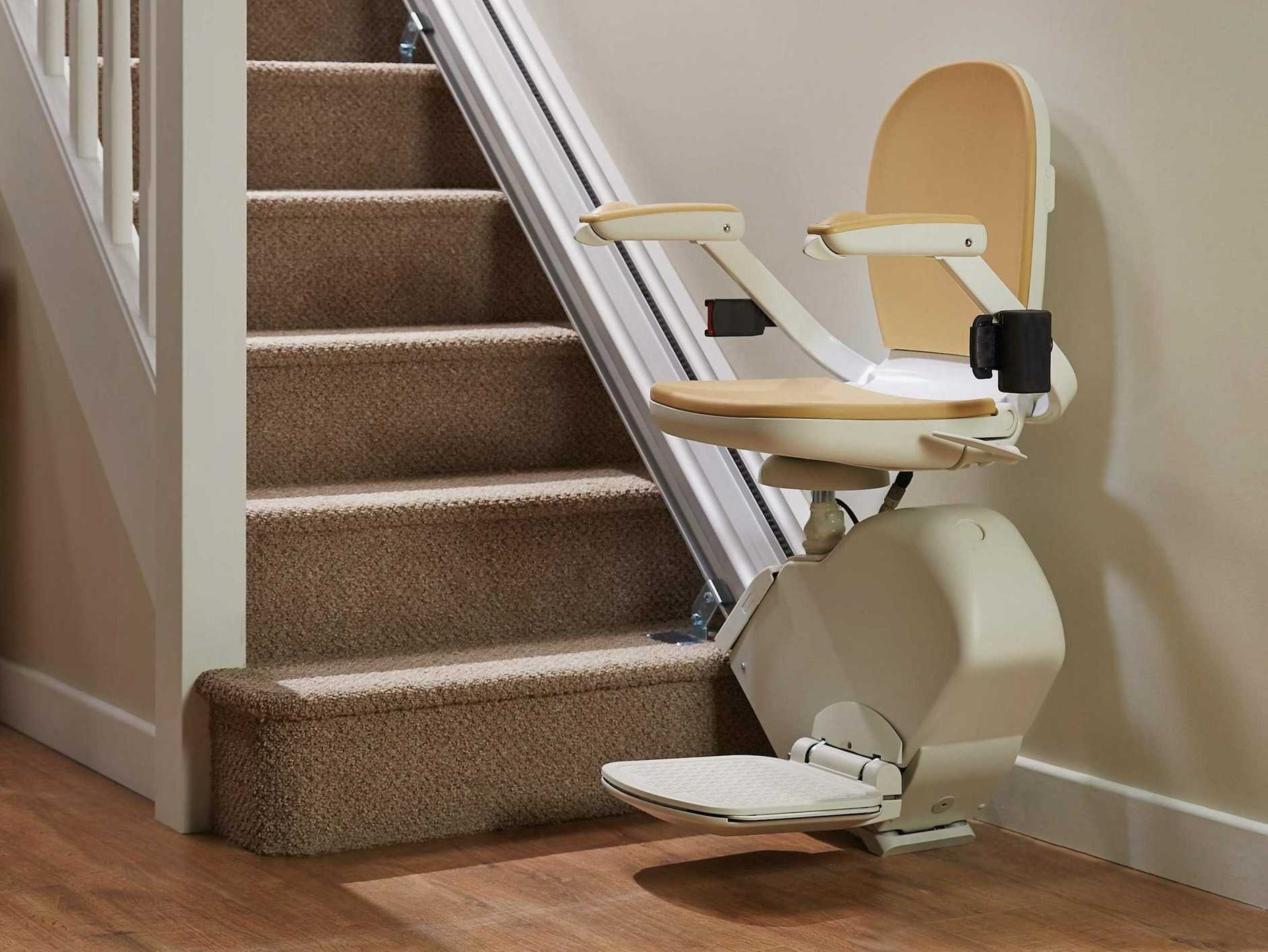Stair lift chairs are invaluable for individuals with limited mobility, providing safe and convenient access to different levels of their homes. A critical query often arises: “Will Medicare pay for a stair lift chair?” Unfortunately, Original Medicare typically does not cover stair lift chairs.
What is a Stair Lift Chair?
A stair lift chair, essential for those with mobility impairments, is a mechanical device that attaches to your staircase. It facilitates safe movement up and down the stairs, featuring a comfortable seat, footrest, and armrests, all controlled by an easily accessible panel.

Medicare’s Coverage Spectrum
Medicare, catering to individuals over 65, encompasses various health services. Medicare Part A focuses on hospital and skilled nursing facility care, while Part B extends to outpatient and preventive services. Medicare Part C (Medicare Advantage) offers added benefits like routine vision and dental care, and Part D covers prescription medications. However, it’s crucial to note that certain services, such as long-term care and stair lift chairs, fall outside Medicare’s coverage.
Exploring Alternatives for Funding a Stair Lift Chair
Despite Medicare’s limitations, several funding alternatives exist for stair lift chairs:
- Medicare Advantage Plans: These plans, provided by private insurers, might offer coverage for stair lifts in specific scenarios. It’s advisable to explore your plan’s details for clarity.
- Medicaid Assistance: In many states, Medicaid could partially or fully fund stair lift installations through HCBS waivers, though eligibility criteria vary.
- Veteran Health Administration: Veterans might be eligible for stair lift grants through VA programs.
- State Funding Programs: Certain states provide financial assistance for home modifications like stair lifts, often available through the local Department of Housing and Urban Development.
- Private Medical Insurance: Check with your insurance provider if stair lifts are covered under your plan.
- Long-Term Care Insurance: Some policies might include stair lift coverage.
- Non-Profit and Charitable Organizations: Various groups offer assistance for durable medical equipment (DME) expenses.
- Financing Options: Financing can break down the cost into manageable monthly payments.
- Cost-Effective Alternatives: Consider new, used, or rental stair lifts to fit your budget.
Each funding source has its eligibility requirements, making it vital to investigate all options thoroughly.
Medicare Advantage and Stair Lift Chairs
Medicare Advantage plans, offered by private companies, sometimes extend to cover home modifications like stair lift chairs, which Original Medicare does not. If covered, these plans might include installation of necessary home aids, subject to specific plan rules.
Securing Medicare Advantage Coverage for a Stair Lift Chair
If your Medicare Advantage plan includes stair lift coverage, you’ll likely need a doctor’s prescription and to choose a Medicare-approved supplier. Always confirm coverage specifics with your provider.
Alternative Financial Assistance for Stair Lift Chairs
Should your Medicare Advantage plan not cover stair lifts, consider these options:
- State Medicaid programs may offer coverage through HCBS waivers.
- Veterans can explore funding through the Veteran Health Administration.
- State-specific funding programs for home modifications.
- Private health insurance and long-term care insurance plans.
- Assistance from non-profits, government agencies, and charities.
- Financing to distribute the cost over time.
Medicare and Mobility Assistance Devices
Understanding Medicare’s Approach to Mobility Assistance
When considering mobility assistance devices like stair lift chairs, it’s crucial to understand Medicare’s overall approach to such equipment. Medicare classifies these devices as Durable Medical Equipment (DME) and typically covers items that are medically necessary and prescribed by a doctor. This section delves into what kinds of mobility aids are covered by Medicare and the criteria for eligibility.
Overview of DME
Durable Medical Equipment (DME) is any medical equipment used in the home to aid in a better quality of living. It is a benefit included in many insurance policies and in some cases covered by Medicare benefits. DME includes items like iron lungs, oxygen tents, Nebulizers, CPAP, catheters, hospital beds, and wheelchairs.
Medicare Coverage for DME
Medicare Part B (Medical Insurance) covers power-operated vehicles (scooters), walkers, and wheelchairs as DME. However, Medicare only covers DME if your provider says it is medically necessary for use in the home. Medicare typically only pays for standard equipment that meets your health needs. If you want special features or upgrades, you may have to pay more.
Eligibility Criteria
To be eligible for DME coverage, your primary care provider (PCP) must sign an order, prescription, or certificate stating that you need the requested DME to help a medical condition or injury and that the equipment is for home use. A face-to-face visit may also be required, which must take place no more than six months before the prescription is written.
Process for Obtaining DME through Medicare
The process for obtaining DME through Medicare involves the following steps:
- Your doctor submits a written order stating that you have a medical need for a wheelchair or scooter for use in your home.
- You must have limited mobility and meet all of these conditions.
- Your DME supplier should request “prior authorization” and send the request and required documents to Medicare.
- Medicare will review the information to make sure that you’re eligible and meet all requirements for the DME.
Appealing Medicare Decisions
If Medicare denies coverage for your DME, you have the right to appeal the decision. The appeal process involves several steps, including looking at your “Medicare Summary Notice” (MSN), circling the items and/or services you disagree with on the MSN, and providing an explanation of why you think the items and/or services should be covered. You’ll generally get a decision from the Medicare Administrative Contractor within 60 days after they get your request.
Conclusion: Navigating Stair Lift Chair Funding
While direct Medicare coverage for stair lift chairs is limited, multiple alternatives exist for financial support. Investigate options like Medicaid, long-term care insurance, and charitable organizations. For seniors seeking independence and safety at home, a stair lift chair can be a game-changer, making it crucial to explore every available funding avenue.
Answer exploring the specifics of Medicare Part B coverage for mobility devices, including any exceptions or special circumstances.
Provide information on rare or special cases where Original Medicare could cover these costs, such as certain medical conditions or situations.
Discuss popular stair lift chair brands and models, potentially covered by Medicare Advantage plans, aligning with user interest in quality and reliability.
Offer guidance on how to check coverage details with Medicare Advantage providers, emphasizing the importance of verifying individual plan benefits.
Reiterate and expand on alternative funding sources like Medicaid, VA benefits, state programs, and charitable organizations, providing a comprehensive view of available options.
